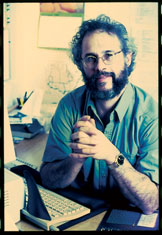By Steve Oppenheimer
(July 1999)
July 4, of course, is Independence Day in the U.S.A. That means it’s time to bring out the fireworks; we’re giving our readers a July bonus and our U.S. subscribers two bonuses!
If you are a U.S. subscriber, you received a free copy of our third annual Personal Studio Buyers Guide with your July issue. Newsstand buyers and subscribers in foreign countries can purchase PSBG wherever they buy EM. It’s a valuable resource; I refer to my copy regularly throughout the year.
Personal Studio Buyers Guide lists personal-studio products available in the United States, within a wide variety of categories, complete with essential specifications. This year’s edition also features three articles that focus on personal-studio construction.
We strive to cover every type of product in PSBG, and each year we draw closer to that goal. This year, we added several new product types. This year, we removed the Recording/Editing Software Plug-Ins categories. However, these, and four new computer-related charts, will appear in our second edition of Desktop Music Production Guide, available in November 1999.
The sequencer chart remains in PSBG this year; it serves as a great companion to our July cover story, “Sequencing Games” (see p. 34), in which we evaluate all the leading commercial digital audio sequencer programs for the Mac and Windows. “Sequencing Games” is divided into three sections: cross-platform software, Windows-only software, and Mac-only programs. We considered only two sections, for Mac and Windows, which would include direct comparisons with the cross-platform programs. However,, the cross-platform products would then have been covered twice, which seemed unfair, and it was more practical to split tis gigantic task into three pieces.
Ultimately, the three-part concept works because, although we offer plenty of opinions, the article is not a “face-off.” All nine programs are fine products; our aim is to help you pick one that’s right for you, rather than to designate “winners” and “losers.” We discuss these programs in terms of features and user interface, to give you a sense of what it’s like to work in each environment.
As a July bonus for all fo our readers—newsstand buyers and foreign and domestic subscribers alike—a special Remix supplement has been bound into this issue. I’d like to thank all of our sponsors—especially Bruce Gerrish of IVL—and project editor Joe Humphreys for helping make this supplement happen.
Remixing is not new, but its popularity has soared in the past few years, and there are many new products for this market. Electronic musicians experimenting in remixing—whether they are “turntablists” or electronica artists—are producing exciting, fresh music. The Remix supplement is intended to help educate those wish to know more about how this type of music is created. Also of interest to remixers, “Recording Musician: The Twice-Baked Mix” (p. 110) discusses how to do a remix when you only have a stereo master to work with.
*************
I am delighted to announce that on March 28, EM managing editor Mary Cosola and her husband, Kevin Jackson, gave their son Drew a beautiful baby sister, Rachel Marie Cosola-Jackson. Mary and her little lamb (and Kevin and Drew) are doing fine.
